Crocin Increases Gastric Cancer Cells' Sensitivity to Doxorubicin
- PMID: 32711421
- PMCID: PMC7573416
- DOI: 10.31557/APJCP.2020.21.7.1959
Crocin Increases Gastric Cancer Cells' Sensitivity to Doxorubicin
Abstract
Background: Crocin is one of the substantial constituents of saffron extract. It has multiple clinical effects including anti-cancer effects. The development of the multidrug resistance (MDR) phenotype is one of the principal causes of cancer chemotherapy failure. The multidrug resistance protein 1 (MDR1) is one of the MDR-related protein and is often overexpressed in different cancers. In the present study, we aimed to evaluate the influence of crocin on the expression and function of MDR1 protein in EPG85-257 and EPG85-257RDB gastric cancer cell lines.
Methods: The cytotoxicity effect of crocin was evaluated by the MTT assay. The impacts of crocin on the expression and function of MDR1 were assessed by Real-time RT-PCR and MTT assay, respectively.
Results: The results demonstrated that crocin decreased cell viability in a dose-dependent manner with higher intensity on the EPG85-257 than the EPG85-257RDB cells. Crocin did not make any significant changes in the MDR1 gene expression level in EPG85-257 and EPG85-257RDB cell lines. In contrast, crocin increased doxorubicin cytotoxicity in drug-resistant cells, which might be induced by reduced MDR1 activity.
Conclusion: In summary, although crocin did not affect mRNA expression of MDR1, results of MTT assay suggest that it might inhibit the MDR1 function.
Keywords: Crocin; Gastric cancer; MDR1; Multidrug Resistance; doxorubicin.
Figures
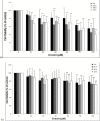
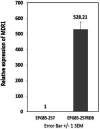

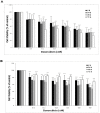
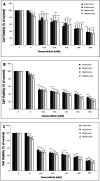
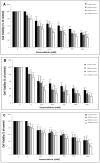
References
-
- Abolhoda A, Wilson AE, Ross H, et al. Rapid activation of MDR1 gene expression in human metastatic sarcoma after in vivo exposure to doxorubicin. Clin Cancer Res. 1999;5:3352–6. - PubMed
-
- Asdaq SMB, Inamdar MN. Potential of Crocus sativus (saffron) and its constituent, crocin, as hypolipidemic and antioxidant in rats. Appl Biochem Biotechnol. 2010;162:358–72. - PubMed
-
- Bolhassani A, Khavari A, Bathaie SZ. Saffron and natural carotenoids: Biochemical activities and anti-tumor effects. BBA-Rev Cancer. 2014;1845:20–30. - PubMed
-
- D’Alessandro AM, Mancini A, Lizzi AR, et al. Crocus sativus stigma extract and its major constituent crocin possess significant antiproliferative properties against human prostate cancer. Nutr Cancer. 2013;65:930–42. - PubMed
MeSH terms
Substances
LinkOut - more resources
Full Text Sources
Medical
Research Materials

